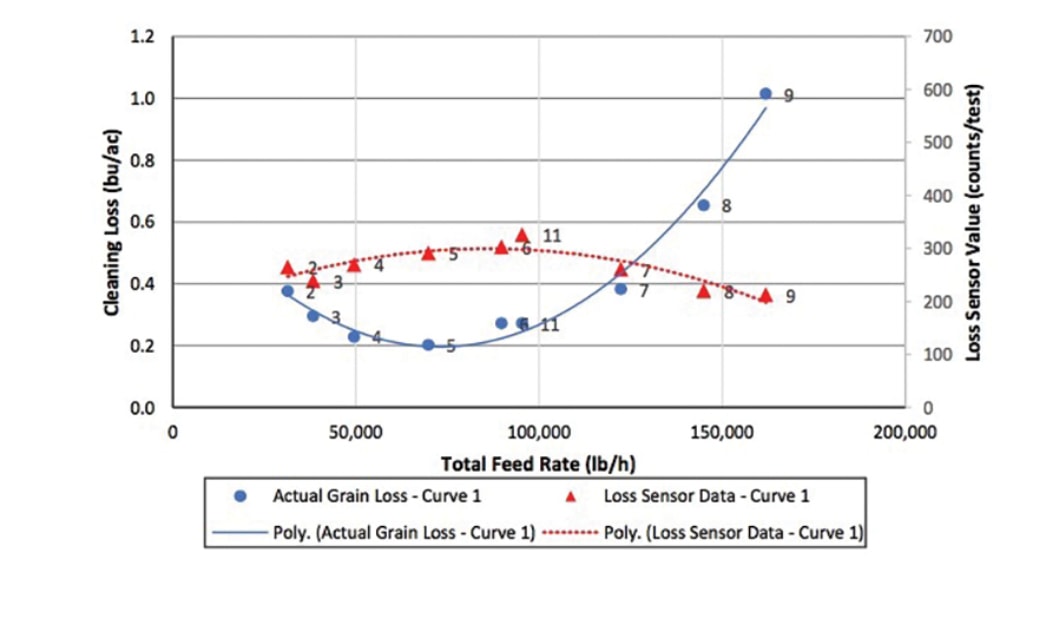Key Result
Existing combine grain loss monitors could not be correlated to an actual grain loss measurement. However they did provide an indication if grain loss was increasing or decreasing with different feed rates.
Project Summary
You can’t manage what you can’t measure. That adage from the business world also applies to harvest grain losses. While current grain loss monitors have been slowly improving over time, they still do not directly correlate actual grain loss to the grain loss signal. As a result, grain loss monitors do not provide operators with the information required to realize the impact of harvest loss, while also allowing them to decide what level of loss they are willing to accept under the conditions in which they are harvesting.

The blue line is the actual cleaning loss indicated by field testing. The red line is what the combine sensor thinks is happening.
This study investigated the feasibility of converting a combine’s loss sensor signal into a grain loss rate – for example, bushels per acre or dollars per acre read-outs. A review of other sensing technologies was also completed to determine if other technologies would be able to provide a more accurate grain loss measurement.
Field testing was completed using PAMI’s combine test equipment to collect the loss sensor signal from a combine and the actual grain loss in peas, wheat and canola. The loss data was collected over a range of feed rates to create loss curves, and the relationship between the grain loss curve and loss sensor signal curve was then graphically compared through the use of relationship equations.
The research found that the correlation between the actual grain loss and loss sensor data using existing sensing technology in the separator area proved to be relatively strong when testing in peas and wheat, but showed a relatively poor correlation in canola. For both the separator and cleaning shoe, the grain loss correlation was dependent on feed rate, which current combine technology has no means of measuring, and as a result, underestimated grain loss as feed rate increased in most cases.
In large grain crops, a grain loss rate could likely be determined through the use of relationship equations and correction factors. However, in small grain crops, sensor resolution proved to be insufficient to accurately support an actual grain loss rate, especially on the cleaning shoe. Some improvements to solve this issue included mounting the cleaning shoe loss sensor independent of the cleaning shoe, or implementing multiple sensors across the rear of the cleaning shoe to effectively increase sensor resolution.
The researchers concluded that existing loss sensing technology is limited in the ability to provide an actual grain loss rate. However, the grain loss monitor system tested did provide a reliable indication of when actual loss was increasing or decreasing.
Other sensing technologies that rely on various sensors including photoelectric, ultrasonic, microwave, microphone, and accelerometer were found to show potential in detecting grain loss. However, further research is required to determine their full capabilities for this application.
See SaskCanola’s brief overview of this project.
Related research
- Check out another harvest optimization study: Quantifying combine auto-adjusting capabilities in canola, also carried out by PAMI.
- Read the On-Farm Survey of Combine Grain Loss in Canola Across Western Canada study, investigating harvest losses.
- Read the Canola direct-cut harvest system development study which examines header losses and the Investigation into converting a combine grain-loss signal into a grain-loss rate research, which investigates the feasibility of converting a combine’s loss sensor signal into a grain loss rate.





